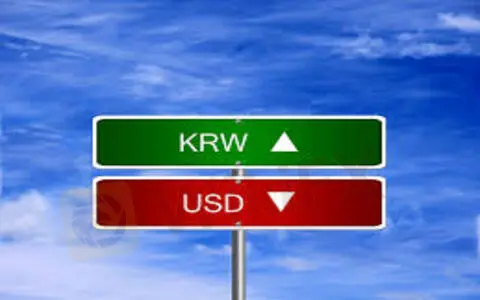简体中文
繁體中文
English
Pусский
日本語
ภาษาไทย
Tiếng Việt
Bahasa Indonesia
Español
हिन्दी
Filippiiniläinen
Français
Deutsch
Português
Türkçe
한국어
العربية
USD/KRW to hover around 1,210 by end-Q2 as Ukraine war keeps won weak – MUFG
Abstract:USD/KRW was volatile in March and ended 0.6% higher on the month amid the background of a 1.36% appreciation of US dollar. Risk sentiment will still be the key factor driving USD/KRW movements in April. Economists at MUFG Bank forecast the pair at 1,210 by the end of the second quarter.

Potential lower risk aversion would provide some support for KRW in the medium-term
“For now, geopolitical conflict still is a key driving force for the USD/KRW. As Russia and Ukraine are negotiating, we expect no escalation but think the uncertainty of Russia-Ukraine situation will remain in near-term, and keep KRW weak in near-term. We forecast USD/KRW at 1,210 by end of Q2.”
“As the country relies on imports to meet almost all of its dry natural gas and crude oil consumption, higher energy prices caused by the Ukraine war will have a direct negative impact on Koreas trade balance. That said, we still remain positive on the KRW against USD in the medium term.”
“We expect USD/KRW to fall to 1,185.0 by year-end, assuming a resolution to the Ukraine war, better contained pandemic and normalized investor sentiment toward Korean assets.”

Disclaimer:
The views in this article only represent the author's personal views, and do not constitute investment advice on this platform. This platform does not guarantee the accuracy, completeness and timeliness of the information in the article, and will not be liable for any loss caused by the use of or reliance on the information in the article.
Read more

Webull Launches SMSF Investment Platform with Zero Fees
Webull introduces commission-free SMSF trading, offering over 3,500 US and Australian ETFs, with no brokerage fees and enhanced portfolio tools.

April Fool's Day Scam Prevention Experience Collection
Share your “Forex Fraud Prevention Experience”, win WikiFX points and gold rewards!

How Will the Market React at a Crucial Turning Point?
Safe-haven assets like gold and U.S. Treasuries are surging, while equities face mounting pressure. As this pivotal moment approaches, how will the market react?

Gold Prices Climb Again – Have Investors Seized the Opportunity?
Gold prices have hit record highs for three consecutive days, with a remarkable 19% gain in the first quarter, marking the strongest quarterly performance since 1986. As market risk aversion rises, demand for gold has surged significantly.
WikiFX Broker
Latest News
Exposing the Top 5 Scam Brokers of March 2025: A Closer Look by WikiFX
Gold Prices Climb Again – Have Investors Seized the Opportunity?
Webull Launches SMSF Investment Platform with Zero Fees
Australian Regulator Warns of Money Laundering and Fraud Risks in Crypto ATMs
FCA Warns Against 10 Unlicensed or Clone Firms
CySEC Warns Against 14 Unlicensed Investment Websites
Top Currency Pairs to Watch for Profit This Week - March 31, 2025
Will natural disasters have an impact on the forex market?
Philippines Deports 29 Indonesians Linked to Online Scam Syndicate in Manila
AI-Powered Strategies to Improve Profits in Forex Trading
Currency Calculator







